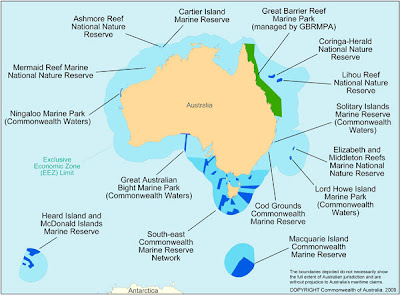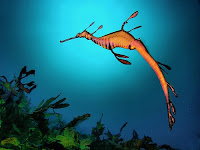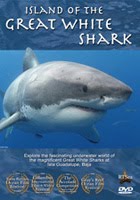 Seamounts are fascinating oceanic structures - mountains really, rising up from the sea floor, pushed up by volcanic forces. While a seamount that reaches the surface, thereby producing some sort of island formation, is still technically a seamount, scientists generally describe seamounts as submerged, typically rising 1,000 meters above the seafloor, thousands of meters from the surface.
Seamounts are fascinating oceanic structures - mountains really, rising up from the sea floor, pushed up by volcanic forces. While a seamount that reaches the surface, thereby producing some sort of island formation, is still technically a seamount, scientists generally describe seamounts as submerged, typically rising 1,000 meters above the seafloor, thousands of meters from the surface.I was reviewing several scientific papers about seamounts and how these unique structures carry significant ecological, commercial and conservation implications.
Ecological
Each seamount serves as an oceanic oasis, often harboring tremendous biodiversity including localized animals and pelagic species. Tuna, billfish, sharks, and other pelagic fish have been known to frequent seamounts. Studies are ongoing to determine whether such species are attracted due to food sources or whether the seamounts act as breeding grounds - or both. Studies have shown that pelagic biodiversity appears to be higher at locations further away from coastal habitats.
The somewhat isolated nature of seamounts makes them of special interest regarding genetic diversity and evolution. While challenging to study, one report called for more scientific research so as to better understand the interconnectivity within and between these unique ecosystems, particularly in the face of negative impacts from commercial fishing and mining.
 "In fact, the large variety of interconnected mechanisms that promote or impede the genetic connectivity of seamount communities via dispersal (and the long-term maintenance of species or the subsequent divergence of populations leading to speciation) are key unknowns to understanding the fundamental evolutionary processes that structure both the diversity and biogeography of deep-sea fauna" from Seamounts: Deep-ocean laboratories of faunal connectivity, evolution, and endemism/Oceanography.
"In fact, the large variety of interconnected mechanisms that promote or impede the genetic connectivity of seamount communities via dispersal (and the long-term maintenance of species or the subsequent divergence of populations leading to speciation) are key unknowns to understanding the fundamental evolutionary processes that structure both the diversity and biogeography of deep-sea fauna" from Seamounts: Deep-ocean laboratories of faunal connectivity, evolution, and endemism/Oceanography.Commercial
Because of increasing demand for seafood and with stocks declining in other open water or coastal areas, seamounts have become targets for industrial fishing, and subject to bottom trawling and longlining.
Reported in Seamount fisheries: Do they have a future?/Oceanography, "Today, seamount fish populations are in trouble following a 30-year history of overexploitation, depletion, and collapse, with untold consequences for global biodiversity and the complex, delicate, but poorly understood, open-ocean food webs. We estimate present global seamount catches to be about 3 million tonnes per annum and increasing – vastly in excess of estimated sustainable levels."
In addition, because of the geological/volcanic nature of seamounts, they have an untapped potential for metals and minerals in the eyes of commercial mining companies. While the technology to obtain these ocean resources is still quite formidable, as terrestrial resources decline, commercial mining interests will ultimately make the effort to expand beyond current levels of mining activity.
Conservation
With commercial interests having an impact and the potential for even greater exploitation lying ahead, the need for proper management of seamounts is critical. But much still needs to be
 learned regarding these unique ocean formations. Current mapping techniques have only scratched the surface as to location and true number of seamounts. And while there have been many studies made of individual locations, according to one report, there is a lack of study to better understand the links between these formations, how they interact with each other, and what would be the consequences on the total marine ecology from negative impacts on individual locations. Seamounts may be relatively isolated but they do not exist within a vacuum.
learned regarding these unique ocean formations. Current mapping techniques have only scratched the surface as to location and true number of seamounts. And while there have been many studies made of individual locations, according to one report, there is a lack of study to better understand the links between these formations, how they interact with each other, and what would be the consequences on the total marine ecology from negative impacts on individual locations. Seamounts may be relatively isolated but they do not exist within a vacuum."Extractive processes such as fishing and mining are degrading seamount ecosystems considerably, raising serious concerns about the impacts of these practices on global ocean biodiversity and key fluxes. Despite the data collected to date, we remain ignorant of the quantitative details of many of these issues," reports Can we protect seamounts for research? A call for conservation./Oceanography.
More understanding of seamounts is needed - individually and holistically - so as to develop proper management policies. Across the ocean floor, seamounts may serve as vital connected waystations that feed, foster, and perpetuate the entire oceanic web of life.
Order special issue on Seamounts from Oceanography. Click here.









































